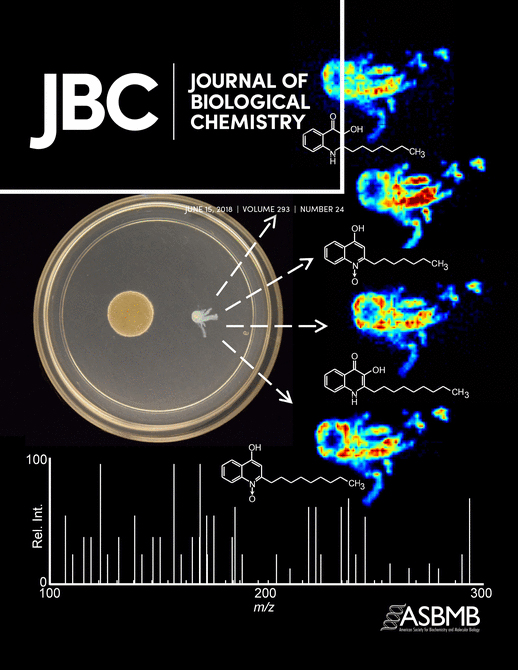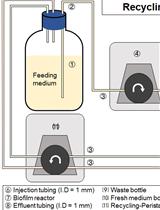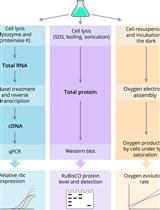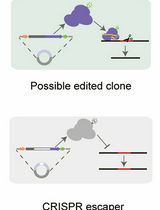- EN - English
- CN - 中文
Measurement of the Promoter Activity in Escherichia coli by Using a Luciferase Reporter
利用荧光素酶报告系统检测大肠杆菌中启动子活性
发布: 2020年01月20日第10卷第2期 DOI: 10.21769/BioProtoc.3500 浏览次数: 5232
评审: Juan Facundo Rodriguez AyalaJose Antonio Reyes-DariasJan-Ulrik Dahl
Abstract
The reporter system is widely used technique for measuring promoter activity in bacterial cells. Until now, a number of reporter system have been developed, but the bioluminescent reporter constructed from the bacterial luciferase genes is one of the useful systems for measuring in vivo dynamics of gene expression. The introduced bioluciferase lux reporter enables easy, fast, and sensitive measurement of the promoter activity without cell lysis because the substrates of bioluminescent reaction are synthesized inside the bacterial cell, thereby allowing low-cost experiments. This protocol describes a high throughput technique to measure the promoter activity in Escherichia coli K-12 using the lux reporter system.
Keywords: lux operon (lux 操纵子)Background
The promoter activity in vivo was measured using a reporter system such as the lacZ (encoding β-galactosidase), gus (encoding β-gulucuronidase), and cat (encoding chloramphenicol acetyltransferase) genes. In the case of the lacZ reporter system, for instance, the test promoter sequence is fused to a promoter-less lacZ gene, creating a test promoter-lacZ fusion gene, which is then transferred into a recipient cell. For the measurement of the activity of the test promoter, however, the whole cell lysate must be prepared to detect in vitro β-galactosidase activity by adding a substrate such as ONPG (O-Nitrophenyl-β-D-galactopyranoside). To avoid such biochemical procedures, the fluorescent gfp gene, coding green fluorescent protein (GFP), was employed as a reporter which can be detected without cell lysis. Thus, the fluorescent reporter system is more convenient than the systems which requires measurement of enzymatic activity. However, the fluorescent proteins have a technical limitation especially in genes that are expressed at low levels because of high background noise that arises from intrinsic autofluorescence of cells. To overcome this problem, the luminescent reporter has been developed, which catalyzes bioluminescence reactions using the substrate as luciferins (Meighen, 1991). The Photorhabdus luminescens bioluminescence luxCDABE genes, coding two luciferase subunits (LuxAB) and three proteins (LuxCDE), which are important for substrate biosynthesis (Bjarnason et al., 2003). Once the test promoter is fused to promoter-less luxCDABE, both luciferase and its substrate are expressed under the control of the test promoter, and the promoter activity can be easily determined by measuring luminescence without the cell lysis (Bjarnason et al., 2003). This bioluminescent reporter system is recognized as a powerful high-throughput assay for studying continuous kinetics of promoter activity (Yamanaka et al., 2018; Burton et al., 2010). In this protocol, we describe how to construct the bioluminescent reporter system and how to measure the promoter activity in E. coli.
Materials and Reagents
- Pipette tips (Thermo Fisher Scientific, catalog number: QSP Liquid Handling Products 110-Q and 111-Q) (Gilson, catalog number: DIAMOND Tips DL10 and D5000)
- 1.5 ml plastic tube (Rikaken, catalog number: STAR MicroTestTube 1.5 ml RSV-MTT1.5)
- 0.22 μm filter (Advantec, catalog number: 13CP020AS)
- Glass tubes (Iwaki, catalog number: TEST18NP)
- Sterile 50 ml plastic tube (Iwaki, catalog number: 2345-050)
- BD Falcon 96-well plates, Black/Clear BD Optilux (Becton Dickinson, catalog number: 353948)
- 96-well white plate (Becton Dickinson, catalog number: 353377)
- Petri dishes (Rikaken, catalog number: STAR SDish9015 ver.2 RSU-SD9015-2)
- pLUX vector (Burton et al., 2010)
- Specific primers (Thermo Fisher Scientific, Custom DNA Oligos) (Table 1)
- TaKaRa Ex Taq (Takara Bio, catalog number: RR001A)
- NucleoSpin Gel and PCR Clean-up (Macherey-Nagel, catalog number: 740609.10)
- Restriction enzyme Xho I (Takara Bio, catalog number: 1094)
- Restriction enzyme Bam HI (Takara Bio, catalog number: 1010)
- In-Fusion HD Cloning Plus (Takara Bio, catalog number: 638920)
- Kanamycin Monosulfate (Nacalai Tesque, catalog number: 19839-44)
- Plasmid DNA Extraction Mini Kit (Favorgen, catalog number: FAPDE 001)
- BigDye® Terminator v3.1 Ready Reaction Mix (Applied Biosystems, catalog number:4337455)
- IPTG (Nacalai Tesque, catalog number: 06289-67)
- 3 M sodium acetate (Nacalai Tesque, catalog number: 06893-24)
- Ethanol (Nacalai Tesque, catalog number: 14710-25)
- Hi-DiTM Formamide (Applied Biosystems, catalog number: 4311320)
- BactoTM tryptone (BD Biosciences, catalog number: 211705)
- BactoTM yeast extract (BD Biosciences, catalog number: 212750),
- NaCl (Nacalai Tesque, catalog number: 31320-05)
- NaOH (Nacalai Tesque, catalog number: 31511-05)
- Na2HPO4·12H2O (Nacalai Tesque, catalog number: 31722-45)
- KH2PO4 (Wako, catalog number: 498748161612)
- MgCl2·6H2O (Nacalai Tesque, catalog number: 20908-65)
- K2SO4·12H2O (Nacalai Tesque, catalog number: 01727-25)
- NH4Cl2 (Nacalai Tesque, catalog number: 02424-55)
- CaCl2 (Nacalai Tesque, catalog number: 08894-25)
- D-(+)-Glucose (Nacalai Tesque, catalog number: 16805-35)
- 0.5 M EDTA (Nacalai Tesque, catalog number: 06894-14)
- Competent E. coli DH5α, provided from National Institute of Genetics in Japan (preparation at time of use) (see Recipes)
- 50 mg/ml kanamycin (see Recipes)
- LB broth (see Recipes)
- LB agar with 50 μg/ml kanamycin (see Recipes)
- 125 mM EDTA (see Recipes)
- 70% ethanol (see Recipes)
- M9-Glucose medium (see Recipes)
Equipment
- Pipettes (Gilson, models: PIPETMAN P2, P10, P20, P100, P200, P1000, P5000)
- Centrifuge (Tomy, model: MX-301)
- Thermal Cycler (Applied Biosystems, model: 2720Thermal Cycler)
- Temperature chamber (Taitec, model: Thermo minder SM-10R)
- Water bath shaker (Taitec, model: Personal-11)
- DNA sequencer (Applied Biosystems, model: 3500Genetyc Analyzer)
- Plate reader (Corona, model: MTP−880Lab)
- Autoclave (Tomy Seiko, model: LSX-500)
Software
- SF6 for Windows (Corona, in only Japanese)
- Microsoft Excel (Microsoft)
Procedure
文章信息
版权信息
© 2020 The Authors; exclusive licensee Bio-protocol LLC.
如何引用
Readers should cite both the Bio-protocol article and the original research article where this protocol was used:
- Yamanaka, Y., Watanabe, H., Yamauchi, E., Miyake, Y. and Yamamoto, K. (2020). Measurement of the Promoter Activity in Escherichia coli by Using a Luciferase Reporter. Bio-protocol 10(2): e3500. DOI: 10.21769/BioProtoc.3500.
- Yamanaka, Y., Winardhi, R. S., Yamauchi, E., Nishiyama, S. I., Sowa, Y., Yan, J., Kawagishi, I., Ishihama, A. and Yamamoto, K. (2018). Dimerization site 2 of the bacterial DNA-binding protein H-NS is required for gene silencing and stiffened nucleoprotein filament formation. J Biol Chem 293(24): 9496-9505.
分类
微生物学 > 微生物遗传学 > 基因表达
分子生物学 > DNA > 基因表达
您对这篇实验方法有问题吗?
在此处发布您的问题,我们将邀请本文作者来回答。同时,我们会将您的问题发布到Bio-protocol Exchange,以便寻求社区成员的帮助。
Share
Bluesky
X
Copy link












